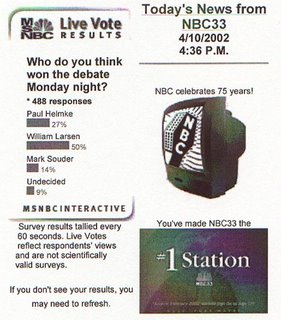Ethanol, when will we learn?
Ethanol is being squeezed. After years of increased corn acreage, this year’s acreage is reduced, why? It may come as a shock to many, but corn requires rotation. Too many years of corn, ravages the soil. It is time for the soil to take a rest and grow something else. It also does not help that other crops have risen in price (soy beans) and the cost analysis does not support growing corn.
How did ethanol affect the economy? It created a lot of jobs in construction. Hundreds of ethanol plants were built. It boosted the price of corn from $2 to over $7 a bushel. The price is around $4.50 and most likely will head higher. Do to the wet spring farmers have not planted as much of their crop yet compared to last year.
The competitiveness of ethanol is dependant the price of corn, oil and other plants. The demand for corn is still high. Nearly 1/3 of all corn grown is used in ethanol production. Meat prices are still about 25 to 30% higher than normal. Prior to ethanol, 90% of all corn was used for feed. If ethanol were to go away, the price of meat would drop dramatically.
The price of oil is rising, but is still less than half of what it was last summer. For ethanol to be competitive, the price difference between gasoline and ethanol needs to be more than the tax credit given ethanol, or 45 cents. The only way for ethanol to be competitive is for oil to rise and corn prices remain constant. This is nearly impossible when ethanol capacity is over 14 billion gallons. For plants to be profitable, they need to run at design capacity. To run at design capacity they need a lot more corn. Shifting corn to ethanol results in demand outstripping production leading to higher corn prices for all users such as beef, pork and chicken producers and ethanol plants, corn syrup used is soda. This leads to higher inflation.
Ethanol producers are attempting to create demand for their product through government legislation on the national level. They want to raise the ethanol content in gasoline to 15% from 10%. This could effectively double the demand by law, not consumers. The result would be devastating to grocery prices. I would imagine PETA would welcome this as American Families would be able to afford less meat.
Obama has earmarked $787 million under the American Recovery and Reinvestment Act for advanced biofuels research and development (biorefineries). Our own U.S.D.A. is providing $1 billion as well. Our tax dollars being used to compete against us for our food to feed our families. Does not make sense.
Ethanol is advertised as being cleaner burning than gasoline. Some are attempting to asses ethanol production with a carbon type tax. This would be for the lower corn exports to countries that now use it to cut down trees to grow their own food. In all the debate about cleaner energy, there is no talk about the energy used to make the corn, transport the corn, distill the corn or to transport the ethanol. In Indiana 85% of our electricity comes from burning coal. The CO2 from burning coal is many times that of gasoline. The diesel used in farm operations is also dirtier than gasoline. Many will say that natural gas is used to produce ethanol, but then that creates an artificial demand for natural gas, increasing price resulting in a shift from natural gas to coal.
The capital cost of building an Ethanol plant is between $0.80 and $1.50 per gallon of ethanol. With corn at $4.50 a bushel, gasoline at $2.29 it would be darn near impossible to sell ethanol at a profit. This has led many to go bankrupt. These plants were sold to other at a steep discount. Those who bought the bankrupt plants have a new cost basis as low as $0.40. These costs are the private investment costs and do not include the public cost such as roads, tax abatements, direct state and federal tax incentives for construction.
A study commissioned by the Renewable Fuels Association commissioned from John Urbanchuk of LECG LLC found ethanol displaced 321 million barrels of imported crude-oil, and generated $21 billion in revenues. Does this sound good? How much corn was not exported? How much federal revenues were paid directly to ethanol producers for ethanol? The tax credits cost the US taxpayer over $3 Billion and the lost corn export was over $29 Billion. The numbers show that Ethanol is an economically bad deal. It may have reduced the importation of oil, but it eliminated the export of corn.
You would think that ethanol producers have learned their lesson. However, there are nearly 20 plants under construction with over 125 plants planned. Ethanol producers are betting they can convince our elected representatives to increase the national ethanol content in gasoline from 10% to 15%. As Americans need to stop this! We need to just say no to Ethanol from agricultural products. We need to stop all tax subsidies for ethanol production and allow ethanol producers to compete in the open market on their own.



1 Comments:
Bill:
Sounds like a plan to ME...
\
But then again, I;ve believed for DECADES that we "could" pursue BETTER alternative energy such as LPG, LNG, and hydrogen tech...BUT...the government sees things a bit "differently, shall we say.
I posted on this today and the cars we'll be driving.
You make excellent points, as usual.
Good post.
B.G.
Post a Comment
<< Home